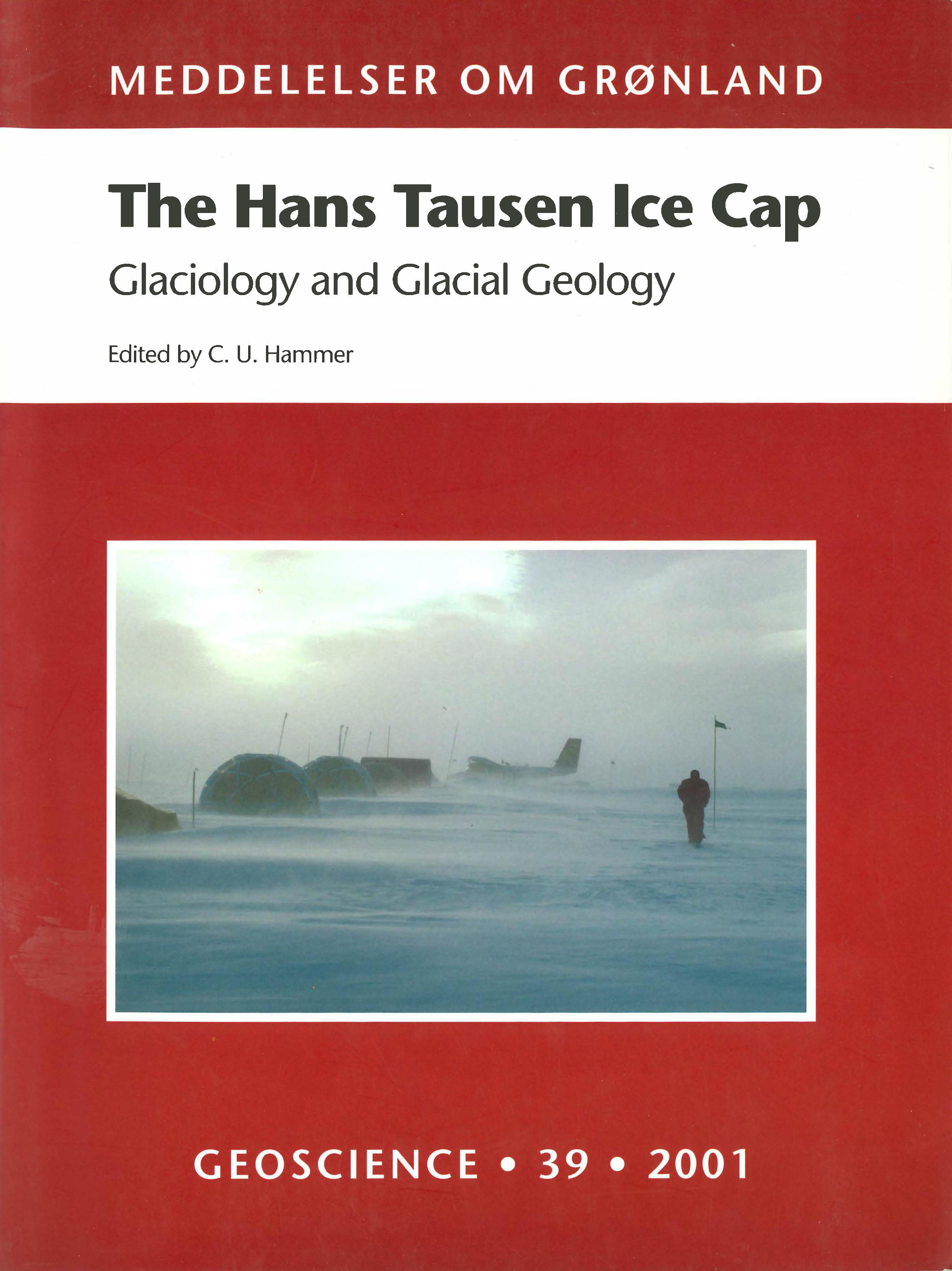Glaciological and chemical studies on ice cores from Hans Tausen Iskappe, Greenland
DOI:
https://doi.org/10.7146/moggeosci.v39i.140221Abstract
The paper presents studies of various chemical and isotopical parameters from ice cores drilled in the northernmost located ice cap, Hans Tausen Iskappe, Pearyland, Greenland (HT). The 346 m main ice core (MC95) was drilled to bedrock in 1995 as well as a 35 m shallow core (SC95). A 60 m shallow core (SC75) and a 51 m shallow core (SC76) was drilled at two different positions in1975 and 1976, respectively. A 60 m shallow core (SC94) was drilled in 1994. Continuous stable isotope records exist for all of these cores, total β-activity only from SC75 and SC76. Continuous ECM inferred acidity records exist along the 1995 cores (MC95 and SC95) and finally detailed records of dust and water soluble ion concentrations exist on selected parts of MC95.
To determine a time scale for the ice core is an important prerequisite for the interpretation of other records. The age scale is based on acid layers, caused by known volcanic eruptions, and by comparison of the chemical composition of these layers to that found in ice cores from other arctic locations. The total β-activity data from SC75 and SC76 provide fixed points to the time scale because a pronounced increase in total β-activity is related to the thermo-nuclear tests in the atmosphere in the early 1960'ies. Many of the investigated parameters exhibit seasonal variations e.g. δ18O, acidity, Cl– and dust, therefore the study of the accumulation history of the ice cap improves our knowledge of the question if the mass balance of the Hans Tausen Iskappe is in equilibrium or not.
In the upper half part of the ice core the MC95 ECM record reveals several events of high acidity which can be connected to volcanic events known from other Greenland ice core records. Among the identified volcanic events are AD 1912 (Katmai, Alaska), AD 1815 (Tambora, Indonesia), AD 1783 (Laki, Iceland), AD 934 (Eldgjà, Iceland) and e.g. the signals of AD 1259 and 49 BC. The two latter signals originate from major volcanic eruptions of unknown eruption sites with a probable location close to the Equator in the case of the AD 1259 event. Some of the volcanic events are selected for an analysis of dust and water soluble chemical components, including F–, CH3SO2–, Cl–, NO3–, SO42–, Na+,NH4+, K+, Mg2+ and Ca2+. Coulter counter technique was used for the dust measurements and the chemical analysis were carried out by ion chromatography.
Downloads
Published
How to Cite
Issue
Section
License
Coypyright by the authors and the Commision for Scientific Research in Greenland / Danish Polar Center. No parts of the publications may be reproduced in any form without the written permission by the copyright owners.


